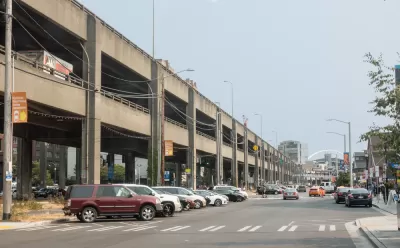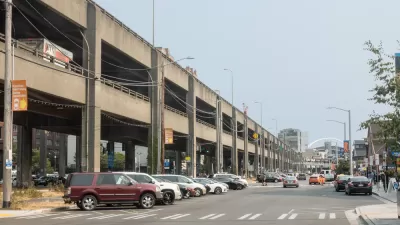Sections of the Alaskan Way Viaduct will begin closing on January 4, 2019. The city's new tunnel to replace the route doesn't open until February.

The long-awaited tunnel to replace the Alaskan Way Viaduct will open in February, but not before the Alaskan Way Viaduct closes. Stephen Fesler provides details on the "Seattle Squeeze."
The first impacts from the closure of the SR-99 viaduct will begin on January 4th with the southbound S Atlantic St off-ramp and northbound Royal Brougham Way on-ramp. Other on- and off-ramps as well as the highway mainline will remain open until 10pm on January 11th when the remainder of the viaduct will fully closes.
The Washington State Department of Transportation (WSDOT) expects that the full viaduct closure will send an estimated 90,000 daily vehicle trips to other roads or convert to other types of trips until the new deep-bore tunnel opens in February.
As for what the state and the city will have to do to make up the difference in the meantime, Fesler provides lots of details:
WSDOT is planning to convert I-5 southbound high occupancy vehicle (HOV) lanes to general purpose lanes from Mercer Street to S Corson St just for good measure–keeping motorists happy and suffering in equal measure while ensuring transit is exceptionally slow on I-5.
Moreover:
The Seattle Department of Transportation (SDOT) will roll out temporary transit lanes on Cherry Street, 4th Ave S, Aurora Avenue, and the West Seattle Bridge ahead of the viaduct closure.
Fesler notes that some of these changes could become permanent, like the measures taken in New York City to address the L Train closure. An earlier Planetizen post by Philip Rojc offers more insight and background on the Seattle Squeeze.
FULL STORY: Extra Water Taxi Service and a Few Temporary Bus Lanes Planned for Seattle Squeeze

Maui's Vacation Rental Debate Turns Ugly
Verbal attacks, misinformation campaigns and fistfights plague a high-stakes debate to convert thousands of vacation rentals into long-term housing.

Planetizen Federal Action Tracker
A weekly monitor of how Trump’s orders and actions are impacting planners and planning in America.

In Urban Planning, AI Prompting Could be the New Design Thinking
Creativity has long been key to great urban design. What if we see AI as our new creative partner?

King County Supportive Housing Program Offers Hope for Unhoused Residents
The county is taking a ‘Housing First’ approach that prioritizes getting people into housing, then offering wraparound supportive services.

Researchers Use AI to Get Clearer Picture of US Housing
Analysts are using artificial intelligence to supercharge their research by allowing them to comb through data faster. Though these AI tools can be error prone, they save time and housing researchers are optimistic about the future.

Making Shared Micromobility More Inclusive
Cities and shared mobility system operators can do more to include people with disabilities in planning and operations, per a new report.
Urban Design for Planners 1: Software Tools
This six-course series explores essential urban design concepts using open source software and equips planners with the tools they need to participate fully in the urban design process.
Planning for Universal Design
Learn the tools for implementing Universal Design in planning regulations.
planning NEXT
Appalachian Highlands Housing Partners
Mpact (founded as Rail~Volution)
City of Camden Redevelopment Agency
City of Astoria
City of Portland
City of Laramie





























